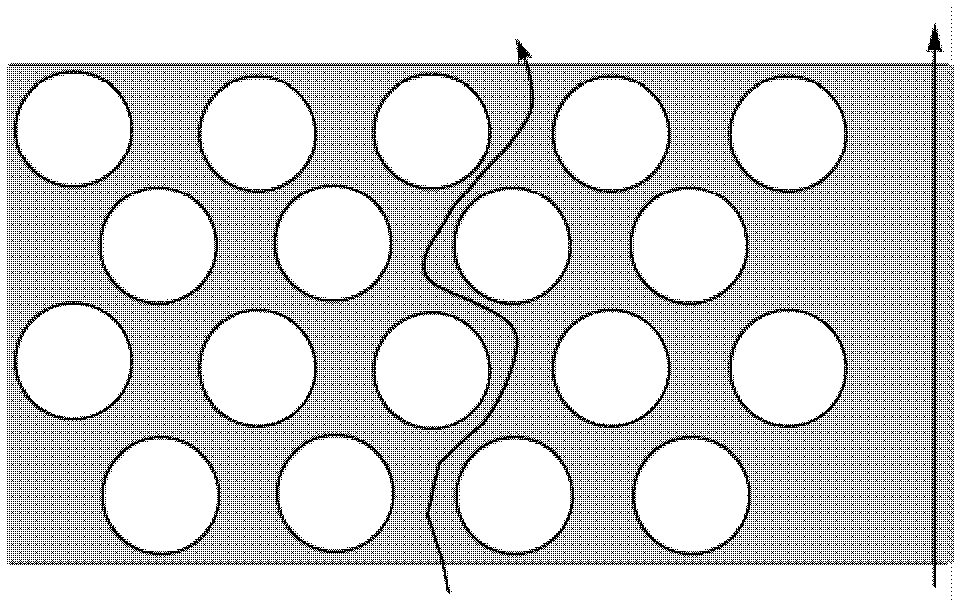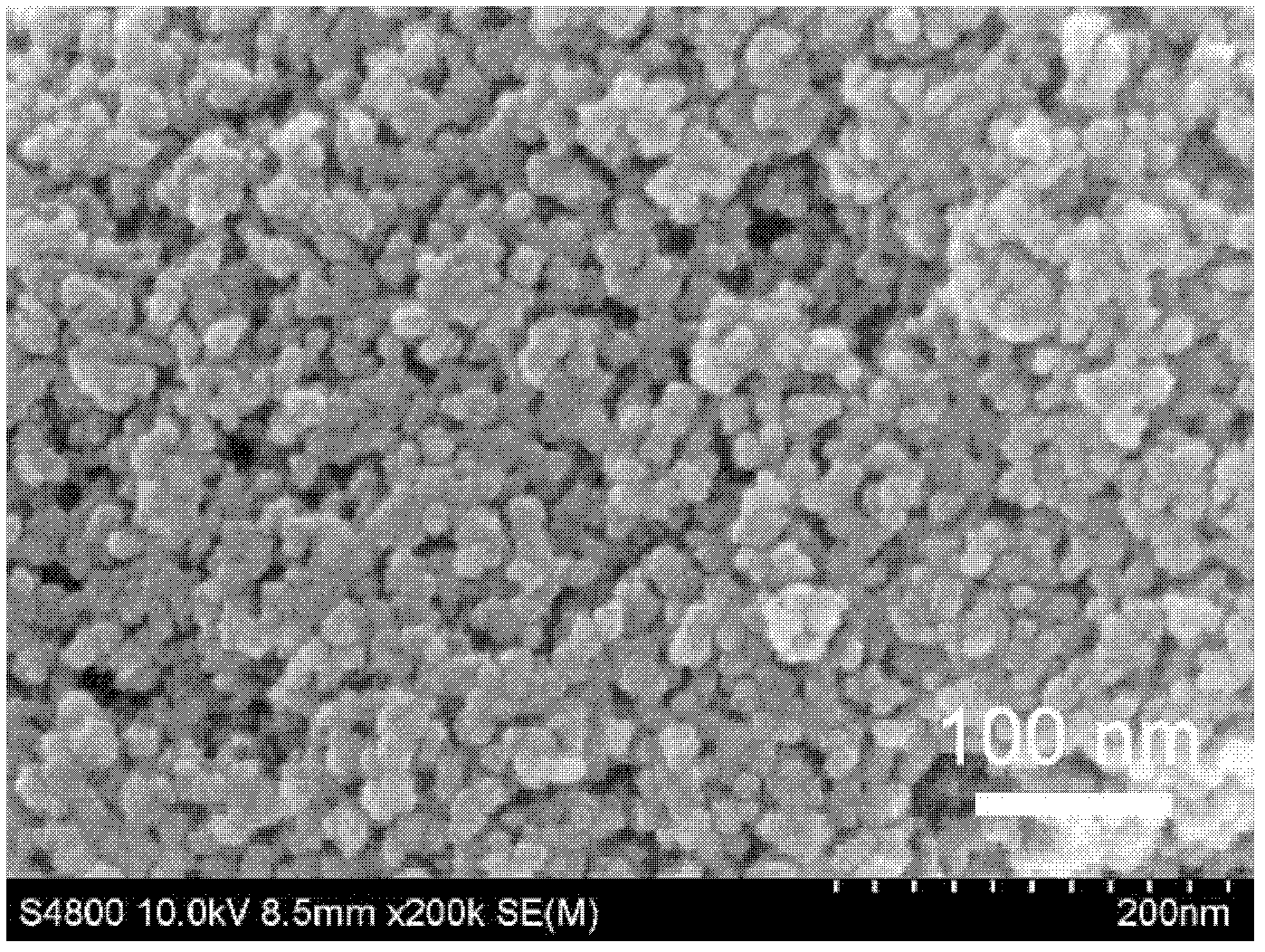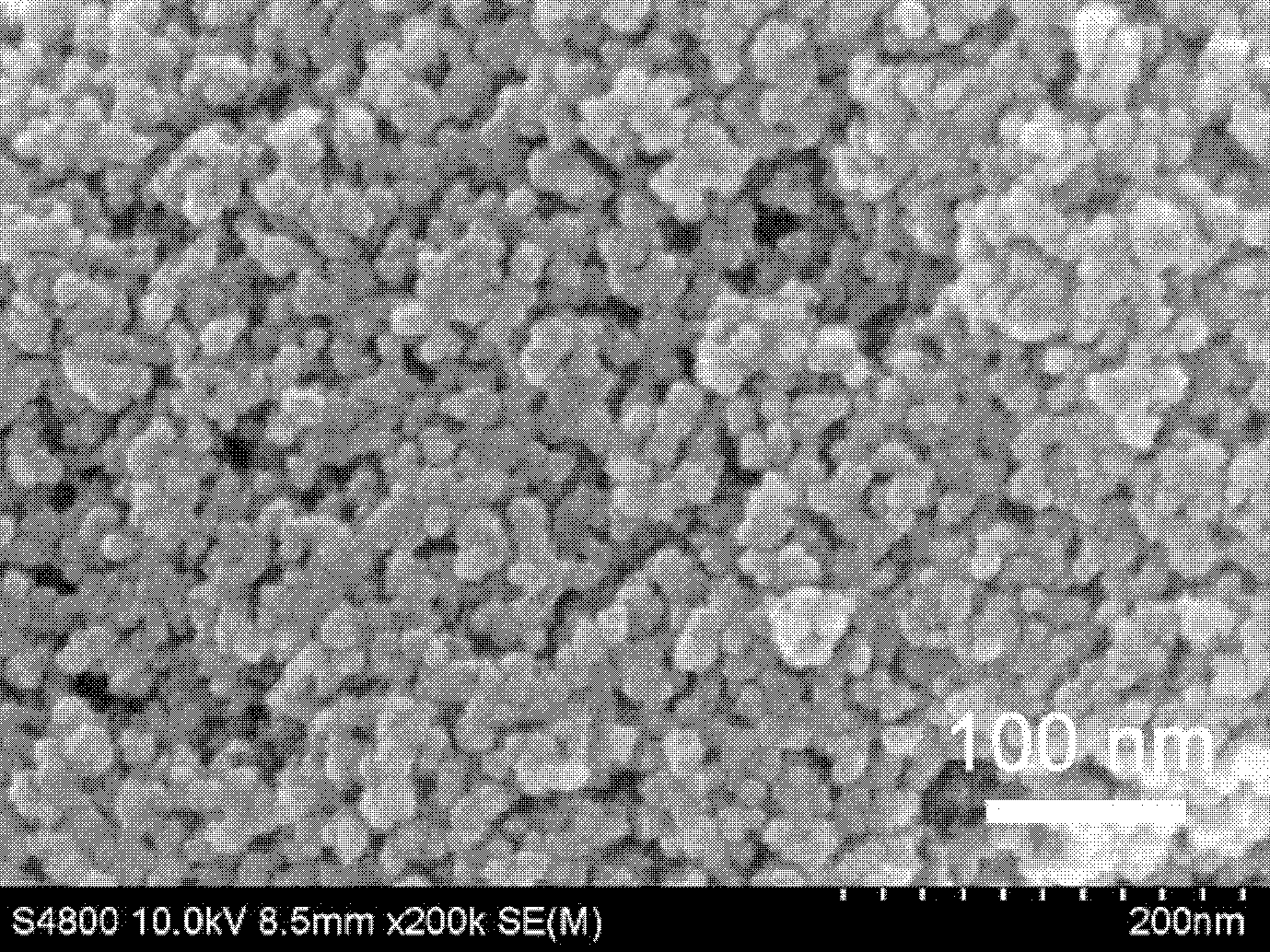Preparation method for silicon dioxide block layer used for I-III-IV compound solar cell
A technology of I-III-IV and solar cells, which is applied in the field of solar cells, can solve the problems of reduced cell efficiency and achieve the effects of reduced cross-sectional area, simple process equipment, and low process temperature
- Summary
- Abstract
- Description
- Claims
- Application Information
AI Technical Summary
Problems solved by technology
Method used
Image
Examples
preparation example Construction
[0016] The embodiment of the present invention is achieved by providing a method for preparing a silicon dioxide barrier layer for I-III-IV compound solar cells, which includes the following steps:
[0017] S01: Prepare an acid-catalyzed solution of alkyl orthosilicate, the acid-catalyzed solution of alkyl orthosilicate contains molar ratio of 1:(1~5):(0.5~3):(0.001~0.1) Alkyl orthosilicate, isopropanol, H 2 O and HCl;
[0018] S02: Leave the acid-catalyzed solution of alkyl orthosilicate for 0.5-6 hours, then add NH 4 OH solution to obtain silica sol, wherein, in the silica sol, alkyl orthosilicate, isopropanol, H 2 The molar ratio of O and HCl is 1: (3-9): (1-6): (0.001-0.1), the NH 4 The molar ratio of OH to HCl is 1:1 to 4:1;
[0019] S03: Coating the silica sol on the medium in an isopropanol atmosphere;
[0020] S04: Continue to age the medium coated with silica sol for 5 to 75 minutes in an isopropanol atmosphere, and then soak in an isopropanol solution for aging ...
Embodiment 1
[0030] Under the rapid stirring of a magnetic stirrer, add H 2 O, the mixture of HCl and isopropanol, make TEOS: isopropanol: H 2 The molar ratio of O:HCl is 1:3:1:1.8×10 -3 ; After standing for 2h, add H dropwise to the above solution 2 O, NH 4 A mixture of OH and isopropanol, making TEOS: isopropanol: H 2 O:HCl:NH 4 The molar ratio of OH is 1:3:4:1.8×10 -3 : 3.6×10 -3 , to obtain silica sol. In an isopropanol atmosphere, apply a certain viscosity of silica sol on a clean silicon wafer, continue aging in an isopropanol atmosphere for 15 minutes, and then immerse in an isopropanol solution for aging for 1 day. The aged wet gel film passed through the N 2 Under the atmosphere, the temperature is rapidly raised and dried in a rapid heat treatment furnace. The temperature rise process is a temperature rise rate of 20°C / s, rising to 300°C, and then maintaining at this temperature for 30min to obtain the silicon dioxide for the I-III-IV compound solar cell. barrier layer, ...
Embodiment 2
[0032] Under the rapid stirring of a magnetic stirrer, add H 2 O, the mixture of HCl and isopropanol, make TEOS: isopropanol: H 2 The molar ratio of O:HCl is 1:1:0.5:1×10 -3 ; After standing for 6h, add H dropwise to the above solution 2 O, NH 4 A mixture of OH and isopropanol, making TEOS: isopropanol: H 2 O:HCl:NH 4 The molar ratio of OH is 1:6:6:1×10 -3 : 3×10 -3 , to obtain silica sol. In an isopropanol atmosphere, apply a certain viscosity of silica sol on a clean silicon wafer, continue aging in an isopropanol atmosphere for 75 minutes, and then immerse in an isopropanol solution for aging for 3 days. The aged wet gel film passed through the N 2 Under the atmosphere, the temperature is rapidly raised and dried in the rapid heat treatment furnace. The temperature rise process is a temperature rise rate of 10°C / s, raised to 500°C, and then kept at this temperature for 75min, and then placed in a nitrogen and hydrogen mixed atmosphere. High-temperature annealing tre...
PUM
| Property | Measurement | Unit |
|---|---|---|
| thickness | aaaaa | aaaaa |
Abstract
Description
Claims
Application Information
 Login to View More
Login to View More - R&D
- Intellectual Property
- Life Sciences
- Materials
- Tech Scout
- Unparalleled Data Quality
- Higher Quality Content
- 60% Fewer Hallucinations
Browse by: Latest US Patents, China's latest patents, Technical Efficacy Thesaurus, Application Domain, Technology Topic, Popular Technical Reports.
© 2025 PatSnap. All rights reserved.Legal|Privacy policy|Modern Slavery Act Transparency Statement|Sitemap|About US| Contact US: help@patsnap.com



